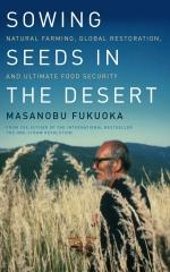Xisca, Thank you very much

I appreciate the compliments.
I am certain you could sow those now, it gets colder here in south florida. It often reaches 28F for a couple nights dthe during the winter and I did not lose any pigeon peas nor the canna.
We have lots of issues with zuchini here, the bugs love to eat the plants. We substitute young luffah as a perennial zuchini. And we use seminole pumpkin (a pumpkin that has been grown here for many generations, cultivated by tribes before europeans came) for a squash crop. It is a lot more resistent to the bugs.
I have not yet tried C. asiatica, but my partner is an herbalist and she has convinced me to get it planted in the wetter areas of the farm.
Ipomea batatas (sweet potatos, boniatos, etc) do do well in the moist areas, this is probably why they love copious amounts of mulch. The section I show on the video I use the leaves for food, as there are not tons of tubers. I planted them originally to form a ground cover and didn't plant densely (1ft x 1ft) for harvesting tubers. That was one of the lessons I have learned, the difference between heavy boniato ground cover and boniato ground cover with dense tuber production.
My friend has some C. verum in his nursery waiting for me to be ready to get it planted.
Pinapples probably need more water then you probably have. Maybe digging a depression, filling it with mulch and planting the pineapples inside the mulch might aid to extra moisture. It's always worth a short for some delicious sweet pinas!
Rollinia - Rollinia deliciosa is in the Anona family. Delicious lemon meringue or a lemon yogurt with honey and raisins flavor. (lol, the latter is what it reminds me of). May need more moisture than what you have, but could be worth a shot if you build proper microclimates, maybe have it fed by some greywater. Produces fruit as early as 3 years. Fruits true to type, so collecting and planting seeds is great since it fruits so young and will be like the mother plant.
Okinawa spinach - Gynura crepioides. Slightly pine tasting leaf that can be cooked or eaten raw. I've observed it best in partial shade, as the sun can burn the leaves or the partial shade can invite more bugs that eat the leaves. Can be used as a ground cover that is not walked on. Propagating is extremely easy by simple layering, or cuttings.
Chaya does fine in environments like mine, monsoon subtropics. It produces a lot of leaves in the summer time and slows down in the winter, probably due to water (78% rain in summer, 22% in winter). I suggest to plant it in the dry areas since it can do so well and save your more moist areas for plants that need it. You could always plant it in the moist place now and cut it out when you have another plant to take its place. This way you are just growing propagation material as well as food. I believe that chaya is a dynamic accumulator since it is extremely nutritious in so many different vitamins and nutrients.
I appreciate the acknowledgement of the hard work was done, as there is only 2-8 inches of soil on this site and the rest of rock. It sure is hard work!
Be well

.





 I appreciate the compliments.
I appreciate the compliments.






